 Search by Keyword
|
"I DON'T WANT TO SPOIL THE PARTY"
(John Lennon - Paul McCartney)
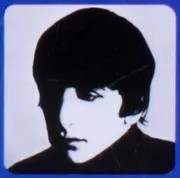 As things turned out, The Beatles failed to supply a song for Ringo to sing on their third British album "A Hard Day's Night." They did record one track during these sessions with Ringo singing lead, a cover of Carl Perkins' classic "Matchbox," but a decision was later made to only include original material on this album. As things turned out, The Beatles failed to supply a song for Ringo to sing on their third British album "A Hard Day's Night." They did record one track during these sessions with Ringo singing lead, a cover of Carl Perkins' classic "Matchbox," but a decision was later made to only include original material on this album.
This being the case, The Beatles definitely wanted to make sure Ringo had a song to sing on their fourth British album, which was due out at the end of that year. Knowing Ringo's love of country and western music, John Lennon and Paul McCartney went about writing a song with a C&W feel especially for him to sing. The result, though, turned out to be a set of lyrics that were very personal to John.
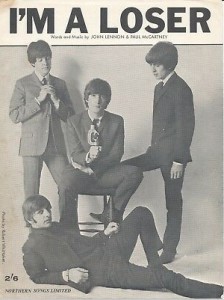 The decision was made to let John take lead vocals on this track and figure out something for Ringo later. On the very last recording session for this album, which became "Beatles For Sale," John relinquished his role as lead singer of another Carl Perkins song "Honey Don't" and gave it to Ringo to sing for the album. The playfulness of these lyrics suited Ringo very well, while "I Don't Want To Spoil The Party" continued the similar vein of lyrics John was writing at the time, as evidenced by other Lennon tracks on the album, such as "I'm A Loser" and "No Reply." The decision was made to let John take lead vocals on this track and figure out something for Ringo later. On the very last recording session for this album, which became "Beatles For Sale," John relinquished his role as lead singer of another Carl Perkins song "Honey Don't" and gave it to Ringo to sing for the album. The playfulness of these lyrics suited Ringo very well, while "I Don't Want To Spoil The Party" continued the similar vein of lyrics John was writing at the time, as evidenced by other Lennon tracks on the album, such as "I'm A Loser" and "No Reply."
Songwriting History
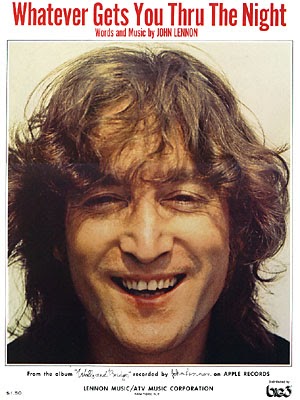 "That was a very personal one of mine," Lennon said in an interview in 1974. "In the early days, I wrote less material than Paul because he was more competent on guitar than I. He taught me quite a lot of guitar really." "That was a very personal one of mine," Lennon said in an interview in 1974. "In the early days, I wrote less material than Paul because he was more competent on guitar than I. He taught me quite a lot of guitar really."
There appears to be some difference of opinion as to the actual songwriter when you look at interviews. "That's me," John stated emphatically in a 1980 interview, while Paul spoke of the track as "quite a nice little song, co-written by John and I."
 Perhaps the matter can be put to rest by Paul's recollection from his book "Many Years From Now": "Ringo had a great style and great delivery. He had a lot of fans, so we liked to write something for him on each album. 'I Don't Want To Spoil The Party'...sounds more like John than me so 80-20 to him, (both of us) sitting down doing a job. Certain songs were inspirational and certain songs were work, it didn't mean they were any less fun to write, it was just a craft, and this was a job to order really, which Ringo did a good job on." Perhaps the matter can be put to rest by Paul's recollection from his book "Many Years From Now": "Ringo had a great style and great delivery. He had a lot of fans, so we liked to write something for him on each album. 'I Don't Want To Spoil The Party'...sounds more like John than me so 80-20 to him, (both of us) sitting down doing a job. Certain songs were inspirational and certain songs were work, it didn't mean they were any less fun to write, it was just a craft, and this was a job to order really, which Ringo did a good job on."
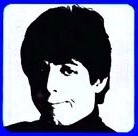 It seems that John felt more of an attachment to the song than Paul did, probably because of the personal nature of the lyrics that mostly came from John's pen. Since Lennon made a point of mentioning McCartney's proficiency on guitar when speaking about the song, Paul may have played more of a musical role than lyrically and, therefore, viewed it more distantly. Someone does need to nudge Paul and remind him that Ringo never did sing the song, John did! If anyone out there has a way to contact Paul, maybe you could straighten it out with him. It seems that John felt more of an attachment to the song than Paul did, probably because of the personal nature of the lyrics that mostly came from John's pen. Since Lennon made a point of mentioning McCartney's proficiency on guitar when speaking about the song, Paul may have played more of a musical role than lyrically and, therefore, viewed it more distantly. Someone does need to nudge Paul and remind him that Ringo never did sing the song, John did! If anyone out there has a way to contact Paul, maybe you could straighten it out with him.
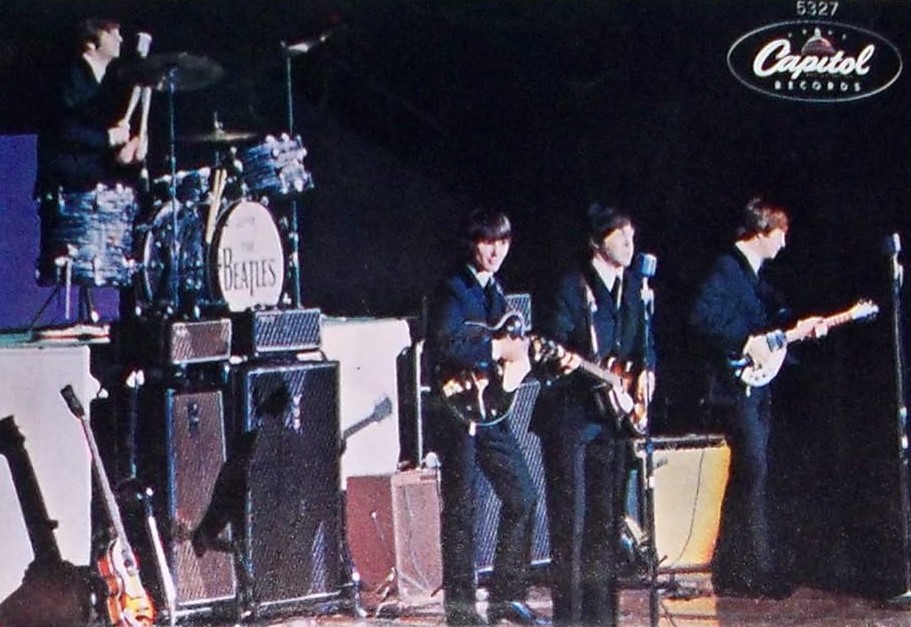 As for the time of writing, we know that it was written in a hotel room sometime during their first full-fledged American tour, which dated from August 19th to September 20th, 1964. With a new small batch of songs being written during their tour, and knowing they had to "get cracking" to complete their next album by the year's end, they tackled them at their very next recording session, "I Don't Want To Spoil The Party" being among the first. As for the time of writing, we know that it was written in a hotel room sometime during their first full-fledged American tour, which dated from August 19th to September 20th, 1964. With a new small batch of songs being written during their tour, and knowing they had to "get cracking" to complete their next album by the year's end, they tackled them at their very next recording session, "I Don't Want To Spoil The Party" being among the first.
 EMI Studios, London
|
Recording History
 It was already the end of September, 1964 and, with a new album and single due out at the end of the year, they had only attempted to record four songs thus far. They knew they needed to hustle. After their North American Tour was completed, The Beatles entered EMI Studio Two on September 29th to start recording the few songs they had written in between performances. The three newly written songs were “Every Little Thing” and “What You’re Doing,” which were primarily McCartney songs, and “I Don’t Want To Spoil The Party,” which was mostly written by Lennon. It was already the end of September, 1964 and, with a new album and single due out at the end of the year, they had only attempted to record four songs thus far. They knew they needed to hustle. After their North American Tour was completed, The Beatles entered EMI Studio Two on September 29th to start recording the few songs they had written in between performances. The three newly written songs were “Every Little Thing” and “What You’re Doing,” which were primarily McCartney songs, and “I Don’t Want To Spoil The Party,” which was mostly written by Lennon.
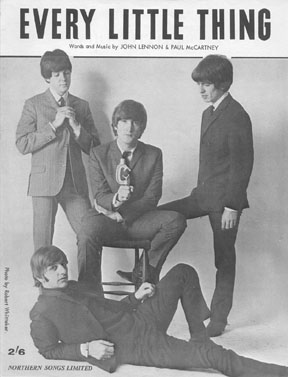 This session ran from 2:30 to 10:45 pm, with one half hour break. “Every Little Thing” was first on the agenda (though not finished) and at about 4:30 they started work on John’s song. The next two hours resulted in seven takes of the song being recorded with everyone playing their usual instruments live with vocals. John sings the higher lead by himself in the verses with Paul joining in on higher harmony in the bridges, Paul and George also singing harmony “oohs” in the ninth through twelfth measures of the verses. They apparently weren’t too familiar with the song as a group because most of these takes didn’t make it through to the end. At 6:30, they decided to take their break. This session ran from 2:30 to 10:45 pm, with one half hour break. “Every Little Thing” was first on the agenda (though not finished) and at about 4:30 they started work on John’s song. The next two hours resulted in seven takes of the song being recorded with everyone playing their usual instruments live with vocals. John sings the higher lead by himself in the verses with Paul joining in on higher harmony in the bridges, Paul and George also singing harmony “oohs” in the ninth through twelfth measures of the verses. They apparently weren’t too familiar with the song as a group because most of these takes didn’t make it through to the end. At 6:30, they decided to take their break.
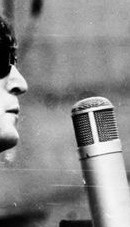 At 7 pm, they got back to work on the song. It took twelve more attempts ("take eight" through "take 19") to get it down to everyone’s satisfaction. In fact, only five out of the 19 takes were complete. "Take 19" was deemed the best, which did include a small flub in Lennon’s vocals during the last verse. Just before he sings the last line “I think I’ll take a walk and look for her,” he started out with “if I…” He may have confused the last line of this verse with the last line of the first verse, which starts “if she turns up while I’m gone…” Being that the lead vocals were recorded simultaneously with the rhythm track, it may have been troublesome to edit this out without disrupting some of the other instruments. At 7 pm, they got back to work on the song. It took twelve more attempts ("take eight" through "take 19") to get it down to everyone’s satisfaction. In fact, only five out of the 19 takes were complete. "Take 19" was deemed the best, which did include a small flub in Lennon’s vocals during the last verse. Just before he sings the last line “I think I’ll take a walk and look for her,” he started out with “if I…” He may have confused the last line of this verse with the last line of the first verse, which starts “if she turns up while I’m gone…” Being that the lead vocals were recorded simultaneously with the rhythm track, it may have been troublesome to edit this out without disrupting some of the other instruments.
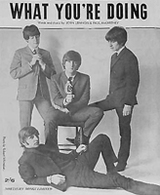 Two overdubs were needed afterward, John singing a lower harmony in the verses and Ringo playing a tambourine during the bridges. By approximately 9 pm, the song was complete, thereby leaving the next hour and forty-five minutes to start their third song “What You’re Doing,” which also needed a lot more work at a later time. With “I Don’t Want To Spoil The Party” complete, they were only one song closer to fulfilling the sixteen-song requirement by the end of the year, but at least they got the ball rolling. Two overdubs were needed afterward, John singing a lower harmony in the verses and Ringo playing a tambourine during the bridges. By approximately 9 pm, the song was complete, thereby leaving the next hour and forty-five minutes to start their third song “What You’re Doing,” which also needed a lot more work at a later time. With “I Don’t Want To Spoil The Party” complete, they were only one song closer to fulfilling the sixteen-song requirement by the end of the year, but at least they got the ball rolling.
 The Beatles got busy on the road again in October of that year performing their current British tour, but took a breather on October 26th to attend a mixing session (most likely the first one they ever attended) as well as the final recording session for their album. The first mono mix performed on this day in the control room of EMI Studio Two was “I Don’t Want To Spoil The Party.” The EMI staff on this session were producer George Martin and engineers Norman Smith and Tony Clark. The Beatles got busy on the road again in October of that year performing their current British tour, but took a breather on October 26th to attend a mixing session (most likely the first one they ever attended) as well as the final recording session for their album. The first mono mix performed on this day in the control room of EMI Studio Two was “I Don’t Want To Spoil The Party.” The EMI staff on this session were producer George Martin and engineers Norman Smith and Tony Clark.
 The stereo mix of the song was performed on November 4th, 1964, also in the control room of EMI Studio Two, by George Martin, Norman Smith and 2nd engineer Mike Stone. Performing ten stereo mixes for the album in three hours is more evidence that much more emphasis was placed on mono mixes at that time. The stereo mix brings George’s guitar work up quite a bit louder, especially noticeable in the introduction. The stereo mix of the song was performed on November 4th, 1964, also in the control room of EMI Studio Two, by George Martin, Norman Smith and 2nd engineer Mike Stone. Performing ten stereo mixes for the album in three hours is more evidence that much more emphasis was placed on mono mixes at that time. The stereo mix brings George’s guitar work up quite a bit louder, especially noticeable in the introduction.
Song Structure and Style
 Once again, Lennon and McCartney stay with their usual ‘verse/ verse/ bridge/ verse’ format (or aaba) with an instrumental section and repeat of the bridge and final verse thrown in to round out the picture. Repeating the first verse also got to be commonplace, as seen in this song. “We’d write a couple of verses, middle…then pretty much repeat verse one,” McCartney explained about their songwriting collaborations. “It meant that you’ve heard those lyrics twice, so we’d rammed ‘em home, and it saved us having to think of a third verse.” In addition, on “I Don’t Want To Spoil The Party,” as well as many others (such as “Eight Days A Week” and “Ticket To Ride”), they decided to go back to the second verse to end the song after the bridge is repeated. Once again, Lennon and McCartney stay with their usual ‘verse/ verse/ bridge/ verse’ format (or aaba) with an instrumental section and repeat of the bridge and final verse thrown in to round out the picture. Repeating the first verse also got to be commonplace, as seen in this song. “We’d write a couple of verses, middle…then pretty much repeat verse one,” McCartney explained about their songwriting collaborations. “It meant that you’ve heard those lyrics twice, so we’d rammed ‘em home, and it saved us having to think of a third verse.” In addition, on “I Don’t Want To Spoil The Party,” as well as many others (such as “Eight Days A Week” and “Ticket To Ride”), they decided to go back to the second verse to end the song after the bridge is repeated.
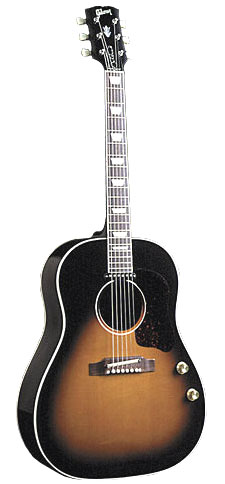 A four-measure introduction starts off the song, featuring only John’s acoustic guitar and George’s lead guitar phrases for the first three measures. After that, Paul and Ringo kick in on the fourth measure to solidify G as the key of the song. The first sixteen-measure verse then begins with John harmonizing with himself on the title of the song, which only appears twice, once now and once when this verse is repeated. The actual melody line is the higher of the two while the harmony, uncharacteristically, is the lower sung melody in the first, second and fourth phrases of the verse. A four-measure introduction starts off the song, featuring only John’s acoustic guitar and George’s lead guitar phrases for the first three measures. After that, Paul and Ringo kick in on the fourth measure to solidify G as the key of the song. The first sixteen-measure verse then begins with John harmonizing with himself on the title of the song, which only appears twice, once now and once when this verse is repeated. The actual melody line is the higher of the two while the harmony, uncharacteristically, is the lower sung melody in the first, second and fourth phrases of the verse.
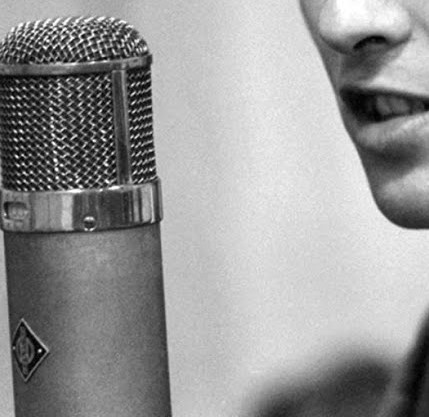 The third of the four phrases of the verse consist of a solo lead vocal from John with two-part background harmony from Paul and George. Subtle lead guitar phrases appear in open spaces of the verse, ending with what sounds like an awkward miss-hit note in the last measure, probably left in because it couldn’t be fully isolated from the existing rhythm track. The third of the four phrases of the verse consist of a solo lead vocal from John with two-part background harmony from Paul and George. Subtle lead guitar phrases appear in open spaces of the verse, ending with what sounds like an awkward miss-hit note in the last measure, probably left in because it couldn’t be fully isolated from the existing rhythm track.
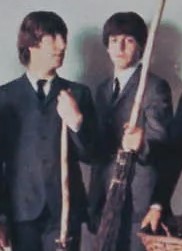 After an identically structured second verse, the twelve-measure bridge is first heard. The Beatles here repeat their new and unusual practice of making the bridge the emotional highlight of the song. As also heard on “No Reply” from this same British album, this bridge contains not only the highest note of the song (the high harmony on “tonight she’s made me sad ”), but the unique melodic peak of the entire song. After an identically structured second verse, the twelve-measure bridge is first heard. The Beatles here repeat their new and unusual practice of making the bridge the emotional highlight of the song. As also heard on “No Reply” from this same British album, this bridge contains not only the highest note of the song (the high harmony on “tonight she’s made me sad ”), but the unique melodic peak of the entire song.
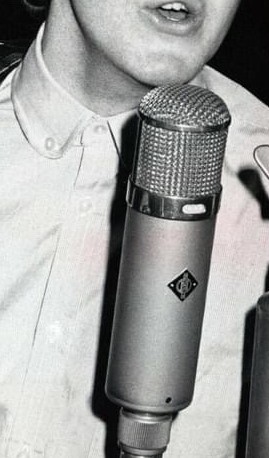 The rhythm of the melody line is also a nice change of pace from the verses, which feature John singing lead and Paul singing his usual higher harmony. The drawn-out second and fourth phrases, on the lyrics “I still love her,” could have been rushed through to fit the expected eight measures of the bridge, but their insistence on highlighting these notes (and extending the measures as a result) depict well the dejected emotional state of the singer. This Lennon trademark of extending measures and time signatures as heard throughout his career shows that he wants his songs to feel right as opposed to following the rules. The rhythm of the melody line is also a nice change of pace from the verses, which feature John singing lead and Paul singing his usual higher harmony. The drawn-out second and fourth phrases, on the lyrics “I still love her,” could have been rushed through to fit the expected eight measures of the bridge, but their insistence on highlighting these notes (and extending the measures as a result) depict well the dejected emotional state of the singer. This Lennon trademark of extending measures and time signatures as heard throughout his career shows that he wants his songs to feel right as opposed to following the rules.
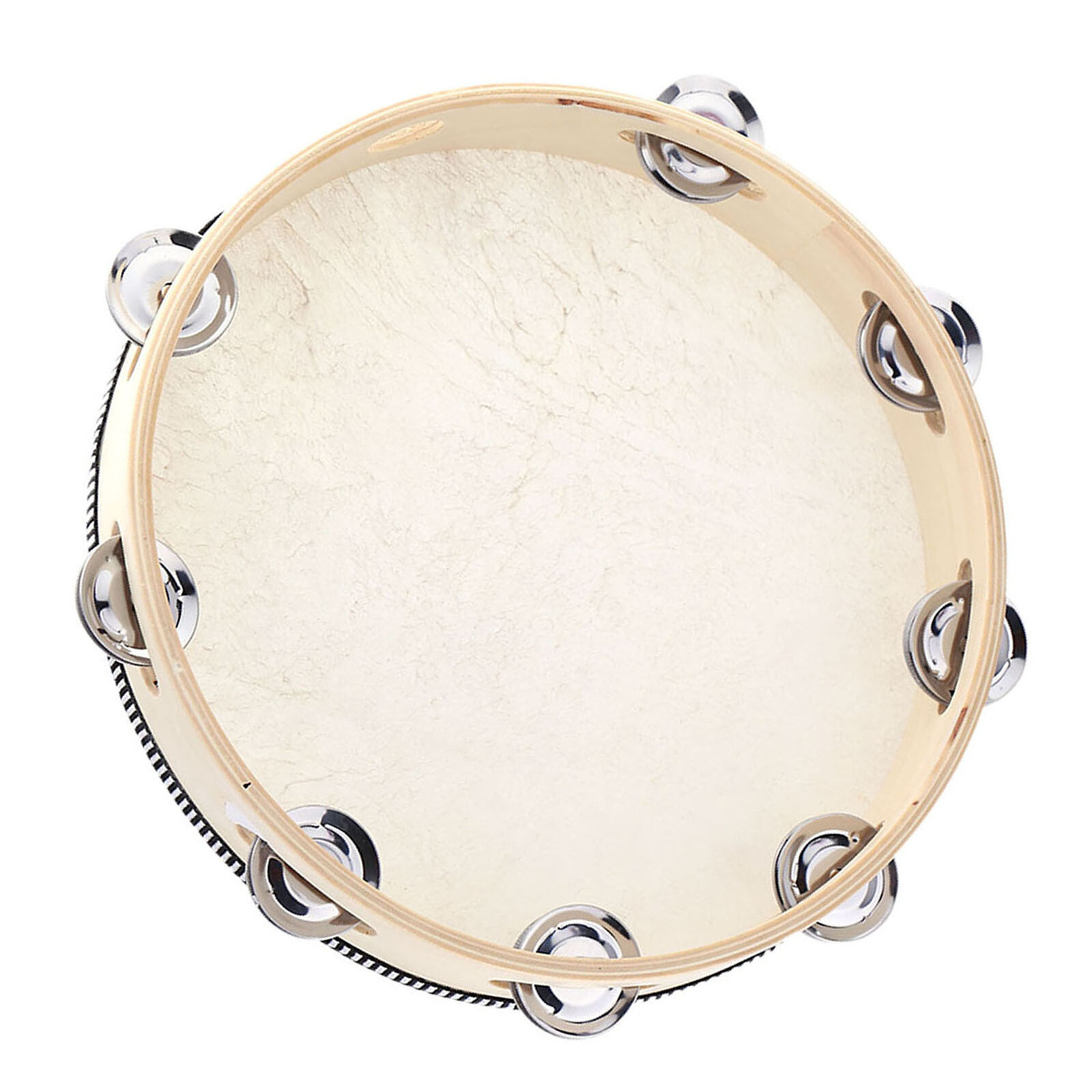 Another interesting feature of the bridge is on the percussive end. Ringo’s overdubbed tambourine is only heard during the bridges and adds the drive to this section, especially since his drumming moves away from his hi-hat to focus on the toms only during the “I still love her” phrases of the bridge. This is a creative touch to the arrangement that also makes the bridge the focal point of the song. Another interesting feature of the bridge is on the percussive end. Ringo’s overdubbed tambourine is only heard during the bridges and adds the drive to this section, especially since his drumming moves away from his hi-hat to focus on the toms only during the “I still love her” phrases of the bridge. This is a creative touch to the arrangement that also makes the bridge the focal point of the song.
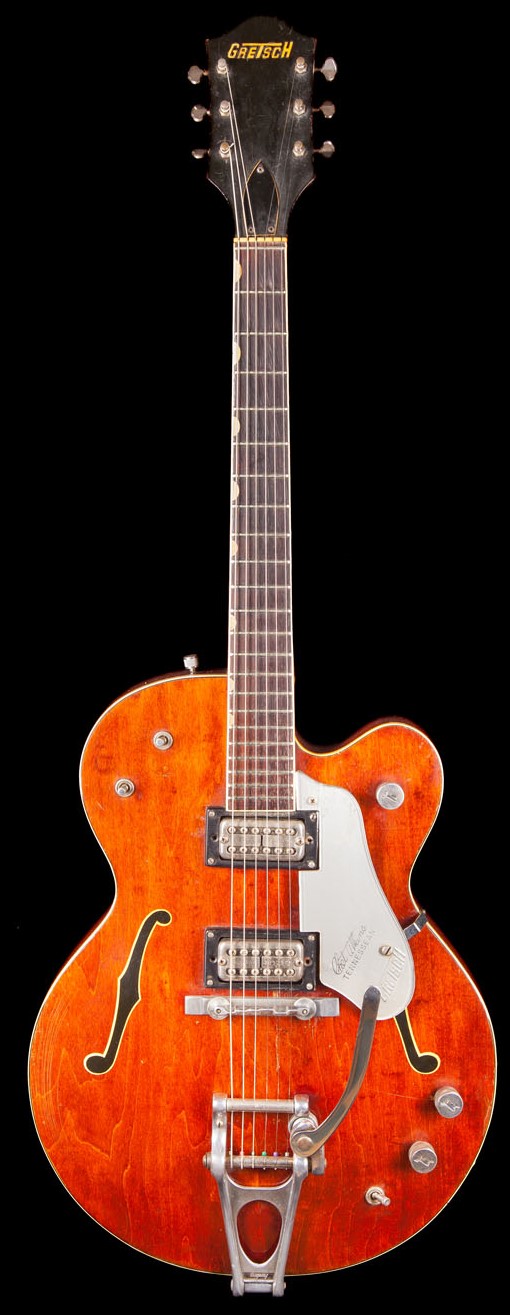 After a repeat of the first verse (and the second and final time we hear the song’s title), we jump headlong into a well-rehearsed and near-perfectly performed guitar solo from George. Before we do, though, we hear Paul give an excited but inappropriate “whoo” to spur him on, inappropriate because of the downbeat subject matter being sung about. The solo sounds upbeat, but the lyrics aren’t. This may be a mismatch, but I enjoy the solo so much that I wouldn’t want the song to be any other way. After a repeat of the first verse (and the second and final time we hear the song’s title), we jump headlong into a well-rehearsed and near-perfectly performed guitar solo from George. Before we do, though, we hear Paul give an excited but inappropriate “whoo” to spur him on, inappropriate because of the downbeat subject matter being sung about. The solo sounds upbeat, but the lyrics aren’t. This may be a mismatch, but I enjoy the solo so much that I wouldn’t want the song to be any other way.
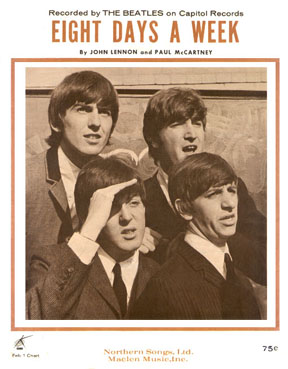 After an identical repeat of the bridge and second verse, we move into the four-measure conclusion, which is basically a carbon copy of the introduction except for the inclusion of the drums and bass, as well as the sudden last chord on the one-beat of the fourth measure. The lead guitar phrases and chord pattern heard during the introduction and conclusion aren’t heard anywhere else in the song, which creates an interesting ‘bookend’ effect. We see this device pop up sporadically in The Beatles catalog, such as on “Eight Days A Week” and “You Like Me Too Much.” After an identical repeat of the bridge and second verse, we move into the four-measure conclusion, which is basically a carbon copy of the introduction except for the inclusion of the drums and bass, as well as the sudden last chord on the one-beat of the fourth measure. The lead guitar phrases and chord pattern heard during the introduction and conclusion aren’t heard anywhere else in the song, which creates an interesting ‘bookend’ effect. We see this device pop up sporadically in The Beatles catalog, such as on “Eight Days A Week” and “You Like Me Too Much.”
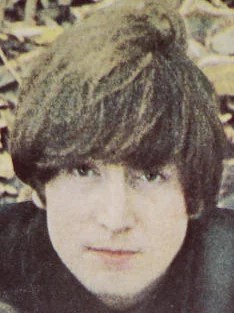 Once again, Lennon’s singer-songwriter phase is in full swing, with his acoustic guitar in the forefront and George’s lead guitar playing only adding flavor to the arrangement. While the instrumentation points to the folk or country and western genre, the chord pattern and melody lines strictly resemble pop music of the day. Once again, Lennon’s singer-songwriter phase is in full swing, with his acoustic guitar in the forefront and George’s lead guitar playing only adding flavor to the arrangement. While the instrumentation points to the folk or country and western genre, the chord pattern and melody lines strictly resemble pop music of the day.
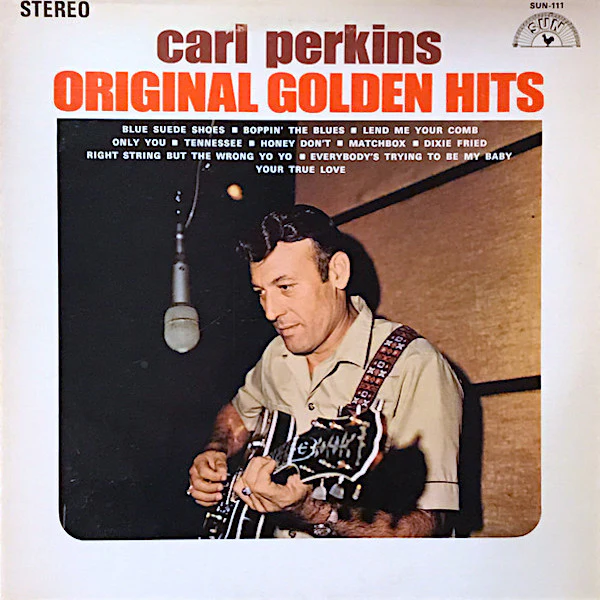 John’s vocal delivery fits the mood of the song convincingly, while his rhythm guitar work acts as the true anchor of the song. Paul’s high register harmonies in the bridge bring the track to an excitable pitch and his bass work, while somewhat low in the mix, appropriately mimics the C&W feel of the song. George’s Carl Perkins-style guitar phases and leads show an impressive degree of finesse while Ringo displays his usual expertise at supplying what the track needs, and even more so given his love for country music. John’s vocal delivery fits the mood of the song convincingly, while his rhythm guitar work acts as the true anchor of the song. Paul’s high register harmonies in the bridge bring the track to an excitable pitch and his bass work, while somewhat low in the mix, appropriately mimics the C&W feel of the song. George’s Carl Perkins-style guitar phases and leads show an impressive degree of finesse while Ringo displays his usual expertise at supplying what the track needs, and even more so given his love for country music.
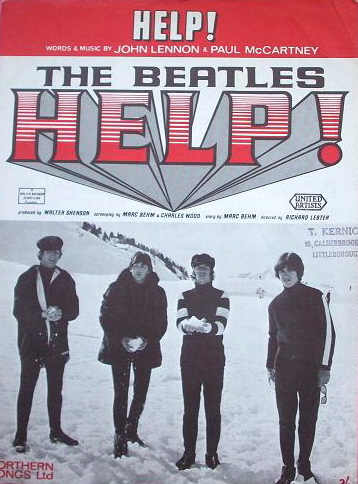 The downbeat lyrics, as commonly heard in Lennon dominated songs of 1964, give an early glimpse of the insecurities he revealed in 1965’s “Help!” These lyrics are vague enough to fit many different scenarios. For instance, does John view his girl not showing up at the party as a betrayal? Or did he actually have a relationship with this girl at all, just wanting to meet up with someone that he had a crush on? This ambiguity leaves it to the listener to decipher, which in turn is an attractive attribute of the song. The downbeat lyrics, as commonly heard in Lennon dominated songs of 1964, give an early glimpse of the insecurities he revealed in 1965’s “Help!” These lyrics are vague enough to fit many different scenarios. For instance, does John view his girl not showing up at the party as a betrayal? Or did he actually have a relationship with this girl at all, just wanting to meet up with someone that he had a crush on? This ambiguity leaves it to the listener to decipher, which in turn is an attractive attribute of the song.
 Since Lennon describes the song as “very personal,” it is very likely that this was an actual experience, although he never elaborated and neither has McCartney. What we do know is that the only reason he went to this party in the first place was to meet up with someone. He is concerned about spoiling everyone else’s fun, though, with his disappointed appearance, so he is confiding in a friend about his feelings and telling him he’s going to be leaving. “If she turns up while I’m gone, please let me know,” he instructs, although he emphatically states “I still love her” despite her non-appearance. Even though he claims that after having “a drink or two” he doesn’t care, it’s obvious that he does, as he exclaims “I wonder what went wrong?” Since Lennon describes the song as “very personal,” it is very likely that this was an actual experience, although he never elaborated and neither has McCartney. What we do know is that the only reason he went to this party in the first place was to meet up with someone. He is concerned about spoiling everyone else’s fun, though, with his disappointed appearance, so he is confiding in a friend about his feelings and telling him he’s going to be leaving. “If she turns up while I’m gone, please let me know,” he instructs, although he emphatically states “I still love her” despite her non-appearance. Even though he claims that after having “a drink or two” he doesn’t care, it’s obvious that he does, as he exclaims “I wonder what went wrong?”
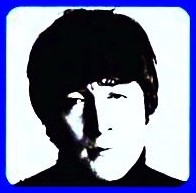 The story hangs in the air unresolved since we never know if he meets up with her. The last thing we know is that he’s going to “take a walk and look for her.” While this is lyrically an odd way to end a pop song, it was probably quite true to John’s personality when he was disappointed. As he sings in the second verse, “I don’t care.” The story hangs in the air unresolved since we never know if he meets up with her. The last thing we know is that he’s going to “take a walk and look for her.” While this is lyrically an odd way to end a pop song, it was probably quite true to John’s personality when he was disappointed. As he sings in the second verse, “I don’t care.”
 US single picture sleeve
|
American Releases
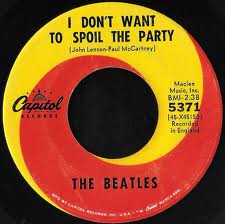 "I Don't Want To Spoil The Party" was one of six songs that Capitol Records had left over from the British "Beatles For Sale" album that didn't get released on the "Beatles '65" album on December 15th, 1964. Capitol was intending to release it on their next American album, but also decided to release it as the b-side of their February 15th, 1965 single "Eight Days A Week." While the a-side became their seventh US #1 single, "I Don't Want To Spoil The Party" became their sixth b-side to also hit the Billboard Top 40, peaking at a respectable #39. "I Don't Want To Spoil The Party" was one of six songs that Capitol Records had left over from the British "Beatles For Sale" album that didn't get released on the "Beatles '65" album on December 15th, 1964. Capitol was intending to release it on their next American album, but also decided to release it as the b-side of their February 15th, 1965 single "Eight Days A Week." While the a-side became their seventh US #1 single, "I Don't Want To Spoil The Party" became their sixth b-side to also hit the Billboard Top 40, peaking at a respectable #39.
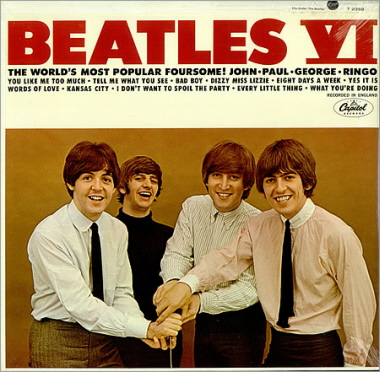 The song was also featured on their next American album as planned. "Beatles VI" was released on June 14th, 1965 and kept Beatles fans at bay until their second movie and soundtrack album "Help!" was released in August of that year. Well over a million US fans bought the "Beatles VI" album, which spent six weeks in the #1 spot on the Billboard album chart. This album was then released on compact disc on January 21st, 2014, both the mono and stereo versions of the album contained on one CD. The song was also featured on their next American album as planned. "Beatles VI" was released on June 14th, 1965 and kept Beatles fans at bay until their second movie and soundtrack album "Help!" was released in August of that year. Well over a million US fans bought the "Beatles VI" album, which spent six weeks in the #1 spot on the Billboard album chart. This album was then released on compact disc on January 21st, 2014, both the mono and stereo versions of the album contained on one CD.
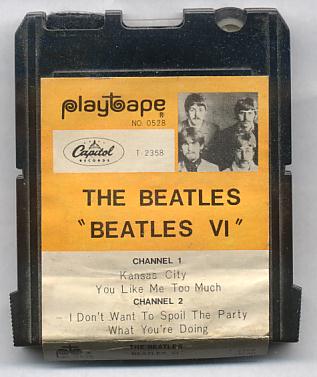 Sometime in 1967, Capitol released Beatles music on a brand new but short-lived format called "Playtapes." These tape cartridges did not have the capability to include entire albums, so two seperate truncated four-song versions of "Beatles VI" were released in this portable format, "I Don't Want To Spoil The Party" being on one of them. These "Playtapes" are highly collectable today. Sometime in 1967, Capitol released Beatles music on a brand new but short-lived format called "Playtapes." These tape cartridges did not have the capability to include entire albums, so two seperate truncated four-song versions of "Beatles VI" were released in this portable format, "I Don't Want To Spoil The Party" being on one of them. These "Playtapes" are highly collectable today.
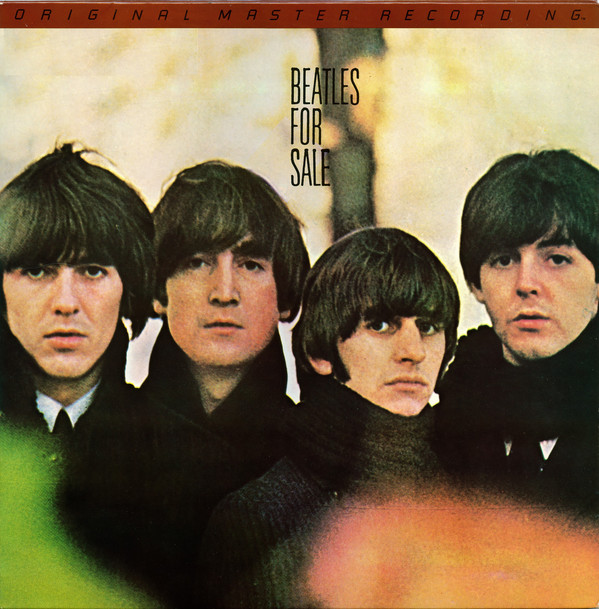 The first time the original British "Beatles For Sale" album was made available in the US was the "Original Master Recording" vinyl edition released through Mobile Fidelity Sound Lab in February of 1987. This album included "I Don't Want To Spoil The Party" and was prepared utilizing half-speed mastering technology from the original master tape on loan from EMI. This version of the album was only available for a short time and is quite collectible today. The first time the original British "Beatles For Sale" album was made available in the US was the "Original Master Recording" vinyl edition released through Mobile Fidelity Sound Lab in February of 1987. This album included "I Don't Want To Spoil The Party" and was prepared utilizing half-speed mastering technology from the original master tape on loan from EMI. This version of the album was only available for a short time and is quite collectible today.
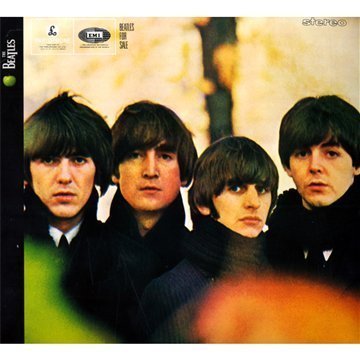 On February 26th, 1987, the "Beatles For Sale" album got its American release on compact disc, the vinyl edition coming out on July 21st, 1987. This was available in mono only, but on September 9th, 2009, the remastered version of the album was released in stereo on CD, the remastered stereo vinyl edition coming out on November 13th, 2012. On February 26th, 1987, the "Beatles For Sale" album got its American release on compact disc, the vinyl edition coming out on July 21st, 1987. This was available in mono only, but on September 9th, 2009, the remastered version of the album was released in stereo on CD, the remastered stereo vinyl edition coming out on November 13th, 2012.
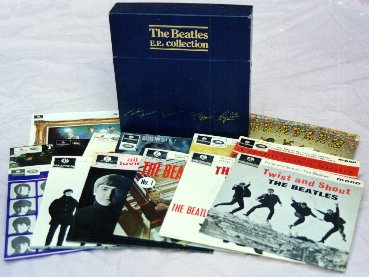 Another mono release in the US was on June 30th, 1992. The box set “Compact Disc EP Collection” came out on this date, “I Don’t Want To Spoil The Party” being included therein because of it appearing on the EP entitled “Beatles For Sale No. 2,” which was originally released on vinyl in Britain on June 4th, 1965. Another mono release in the US was on June 30th, 1992. The box set “Compact Disc EP Collection” came out on this date, “I Don’t Want To Spoil The Party” being included therein because of it appearing on the EP entitled “Beatles For Sale No. 2,” which was originally released on vinyl in Britain on June 4th, 1965.
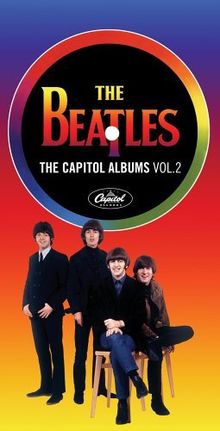 Another release occurred on April 11th, 2006, which was the box set "The Capitol Albums, Vol. 2." This set contained the original "Beatles VI" album in stereo and mono as well as the three other Beatles albums released in 1965. For initial pressings of this set, Capitol mistakenly presented a "mono type-B" fold-down mono mix for the entire "Beatles VI" album, which was a method that combined both the left and right channels of the stereo mix to create a mono mix. Therefore, the mono mix of "I Don't Want To Spoil The Party" in this set was initially prepared in this way, the error being corrected on subsequent pressings. Another release occurred on April 11th, 2006, which was the box set "The Capitol Albums, Vol. 2." This set contained the original "Beatles VI" album in stereo and mono as well as the three other Beatles albums released in 1965. For initial pressings of this set, Capitol mistakenly presented a "mono type-B" fold-down mono mix for the entire "Beatles VI" album, which was a method that combined both the left and right channels of the stereo mix to create a mono mix. Therefore, the mono mix of "I Don't Want To Spoil The Party" in this set was initially prepared in this way, the error being corrected on subsequent pressings.
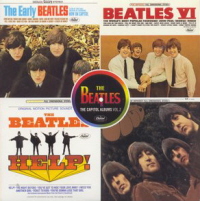 Just prior to the above release, Capitol put together a promotional CD sampler to distribute to radio stations that contained both the stereo and "type-B" mono mixes of “I Don’t Want To Spoil The Party.” This is quite a rare find today. Just prior to the above release, Capitol put together a promotional CD sampler to distribute to radio stations that contained both the stereo and "type-B" mono mixes of “I Don’t Want To Spoil The Party.” This is quite a rare find today.
September 9th, 2009 was the date of release for the CD box set titled “The Beatles In Mono” which includes a remastered version of the original mono mix of "I Don’t Want To Spoil The Party." The vinyl edition was first released on September 9th, 2014.
Live Performances
As much as both Lennon and McCartney liked the song, they recognized that it worked best as an album track and kept it that way. Therefore, they never performed it live nor promoted it in any way, not even on BBC radio.
Conclusion
As seen throughout their songwriting career, Lennon and McCartney liked to tinker with other genres of music. The "White Album," for instance, can easily be described as a cornucopia of just about every style and era of popular music imaginable.
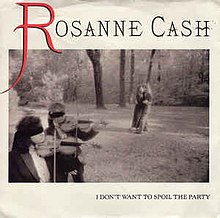 What was incredible was their ability to hit the nail on the head in whatever attempt they made (with a little help from friend George Martin, of course). As to their dabbling in country and western music back in 1964, even though they couldn't help but create it as a mixture with pop music sensibilities, the result was convincing enough to spur country superstar Rosanne Cash to record her version of the song and take it to #1 on the Billboard country chart in 1989. So you can add that to the testimony that you can't keep a good Beatles song down! What was incredible was their ability to hit the nail on the head in whatever attempt they made (with a little help from friend George Martin, of course). As to their dabbling in country and western music back in 1964, even though they couldn't help but create it as a mixture with pop music sensibilities, the result was convincing enough to spur country superstar Rosanne Cash to record her version of the song and take it to #1 on the Billboard country chart in 1989. So you can add that to the testimony that you can't keep a good Beatles song down!
Song Summary
"I Don't Want To Spoil The Party"
Written by: John Lennon / Paul McCartney
Instrumentation (most likely):
- John Lennon - Lead Vocals, Rhythm Guitar (1964 Gibson J-160E)
- Paul McCartney - Bass Guitar (1963 Hofner 500/1), Harmony Vocals
- George Harrison - Lead Guitar (1963 Gretsch 6119 Tennessean), Background Vocals
- Ringo Starr - Drums (1964 Ludwig Super Classic Black Oyster Pearl), tambourine
Written and compiled by Dave Rybaczewski
|
IF YOU WOULD LIKE TO MAKE A DONATION TO KEEP THIS WEBSITE UP AND RUNNING, PLEASE CLICK BELOW!
Sign Up Below for our MONTHLY BEATLES TRIVIA QUIZ!
|